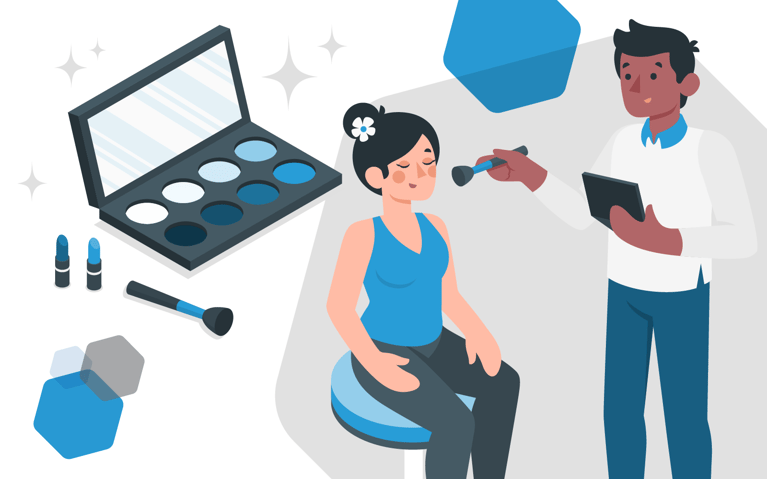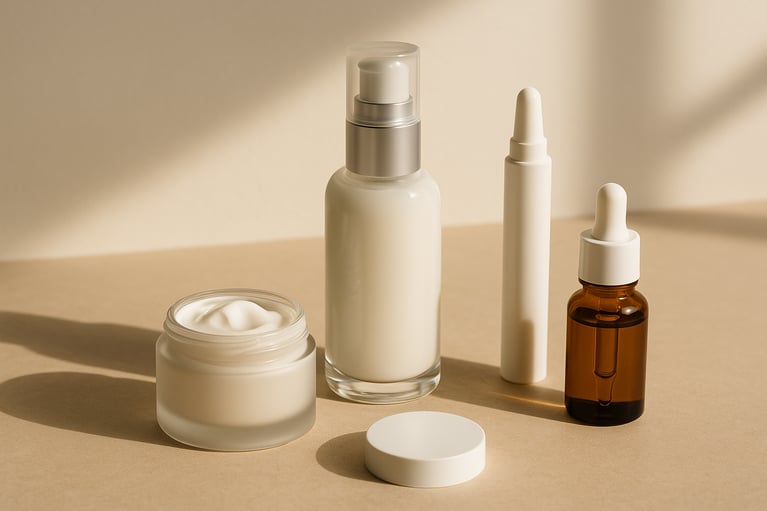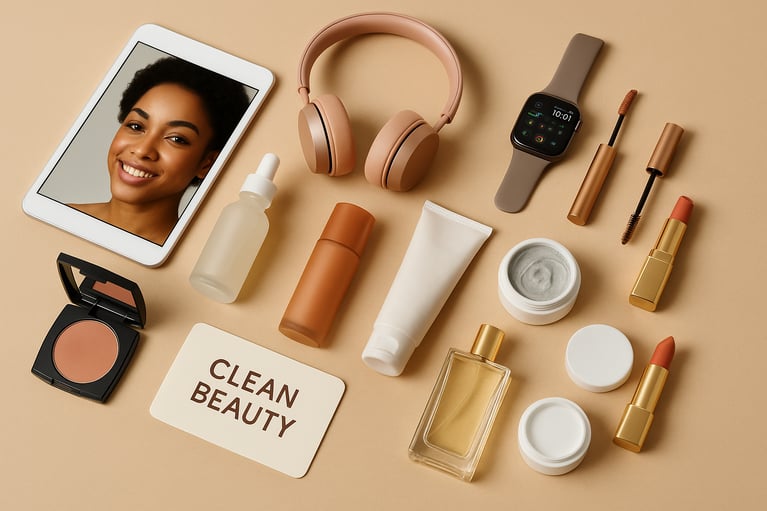Shoppers no longer walk into a store to discover their next favorite lipstick. They find it in a 15-second video, a viral TikTok comment thread or a review from someone they’ve never met. Beauty ecommerce is now about discovery, personalization and creating a customer journey that mirrors the in-store experience, and often exceeds it. From how products are presented to how they arrive at someone’s doorstep, every detail shapes how a brand is perceived.
For makeup companies willing to understand and adapt to this change, the opportunity to outperform traditional players has never been greater.
Evolving consumer expectations & how to meet them
The "belief-driven buyer" is here to stay
Today’s shoppers are belief-driven decision-makers, prioritizing a brand’s ethics as much as its efficacy. According to a joint study by Business of Fashion and McKinsey & Company, two-thirds of consumers now consider a brand’s values integral to purchase decisions. This is particularly true in beauty, where 63% of Americans are inspired by health and beauty brands that showcase diversity and inclusion in their advertising.
Customers want to know what you stand for, how you treat your employees and whether your values align with theirs. Brands that fail to embed these values into their ecommerce strategy risk alienating an increasingly conscious customer base.
Wellness & self-care drive product innovation
The post-pandemic era has also seen a surge in self-care routines and wellness-focused purchases. Ingredients once seen as niche such as probiotics, Ayurvedic elements and ingestibles are now mainstream. This switch reflects a broader cultural emphasis on health, routine and ritual, where beauty is an extension of personal wellbeing.
Whether it's skincare-infused makeup or products with natural, health-conscious ingredients, the most successful brands are those that recognize beauty as part of a larger wellness lifestyle.
Sustainability & transparency as non-negotiables
Gone are the days when "natural" or "organic" claims were enough. Consumers demand proof. They want to know exactly what's in their products, where ingredients come from and how they're sourced. Products made from organic, sustainable and cruelty-free ingredients are no longer niche categories, but a mainstream expectation.
In an industry where online reviews and social proof heavily influence buyer decisions, even a hint of misleading claims can be brand-damaging. Customers are willing to pay premium prices for products that align with their environmental values, but they're also quick to expose brands that don't live up to their claims. The key is to go beyond marketing statements and demonstrate your commitment through your entire supply chain.
How Gen Z is transforming the market
As digital natives, Gen Z consumers’ purchasing behavior is fueled by social media, influencers and shared values. Unlike previous generations who might discover products through traditional advertising, Gen Z finds new brands through Instagram, TikTok and YouTube. They're more likely to trust peer recommendations and influencer reviews than conventional marketing.
This generation also values authenticity above all else. They can spot inauthentic marketing from miles away and will quickly move on to brands that feel more genuine. For makeup ecommerce, this means your social media presence needs to be real, engaging and consistently aligned with your brand values.
The Rise of the Independents
In key markets like the US, independent brands are quick to launch, agile in responding to trends and adept at cultivating strong social media followings.
Platforms like Shopify and TikTok have leveled the playing field, allowing newcomers to launch quickly and scale on the back of persuasive storytelling. Read more about the top trends shaping beauty ecommerce in 2025.
Key strategies to boost your makeup brand online
A. Hyper-personalization: The new standard for online experiences
Personalization is currency. And this goes beyond just showing related products. True personalization means understanding each customer's skin tone, preferences, purchase history and even browsing behavior to create a shopping experience that feels uniquely theirs.
Brands that put the customer at the center of the ecommerce experience see higher conversion rates, stronger loyalty and increased lifetime value.
The technology to achieve this level of personalization is more accessible than ever. From AI-powered product recommendations to virtual try-on tools, the tools exist; it's about implementing them in ways that genuinely improve the customer experience.
B. The power of influence & community
Social commerce, driven by beauty creators who post tutorials, reviews and tips is now one of the most effective channels for discovery and conversion.
But today’s influencers aren’t just recommending products; they’re curating shopping lists, driving viral demand through content formats like “10 must-haves” and “what’s in my cart.” This influencer-led FOMO has created a surge in exclusive product drops, bundle deals and limited-time offers, allowing brands to capitalize on urgency while deepening engagement.
However, there’s a growing need for balance. While this can drive sales, it also contributes to overconsumption that some consumers are starting to push back against. You need to find ways to use influencer marketing while promoting responsible consumption. This might mean focusing on product education rather than just promotion, or creating content that helps customers make informed decisions rather than impulse purchases.
Strategic partnerships are also gaining momentum. Makeup brands are teaming up with complementary product lines, fashion labels or even celebrities to co-create collections that tap into shared audiences. These partnerships work best when there’s authentic alignment in values and demographic targets.
At the heart of all this is community. The beauty industry has long enjoyed higher brand loyalty compared to other verticals. Once customers find a brand that aligns with their skin tone, values or aesthetic, they’re likely to stick around. Smaller brands especially can leverage this loyalty by cultivating tight-knit, value-driven communities online.
C. Data-driven marketing & analytics
Your website traffic, social media campaigns and PPC ads generate valuable data about which visitors are most likely to convert. Retargeting campaigns and email marketing are particularly powerful for beauty brands because they allow you to re-engage with visitors who have already shown interest in your products. The key is to use these tools to build rapport and provide value, not just to push sales.
Long-form content also plays a key role here. Educational blogs, videos and ingredient explainers help demystify formulations and highlight product superiority. They address customer concerns, establish authority and support SEO efforts, making them a smart investment.
D. The exclusivity advantage of D2C & online channels
One of the biggest advantages of selling direct-to-consumer is the ability to offer exclusivity that traditional retail can't match. When you control the entire customer experience, you can create limited editions, early access opportunities and personalized products that make customers feel special.
Operational excellence as the backbone of your makeup ecommerce success
A. Multi-channel selling is the new default
Leading beauty brands aren’t just selling on their websites. They’re building presence across social platforms, marketplaces, search engines and even physical pop-ups.
This doesn't mean being everywhere at once. It means being smart about where your customers are and ensuring a consistent experience across all touchpoints. A customer might discover your brand on Instagram, research products on your website and make their first purchase in-store. Your job is to make sure each step of that journey reinforces your brand message and makes it easy for them to buy.
B. Specialized fulfillment for beauty products
Shipping beauty products poses unique challenges, including temperature-sensitive serums to fragile eyeshadow palettes. Standard fulfillment solutions often fall short. That’s where beauty-optimized logistics come in. With capabilities tailored for cosmetics, brands can ensure that every order arrives fresh, intact and ready to impress.
Cart.com’s coast-to-coast U.S. fulfillment network enables 2-day delivery or less, leveraging technology and customer insights to exceed expectations. These operational advantages translate directly into customer satisfaction and repeat purchases.
Challenges to watch for
Even in a thriving sector, challenges remain. The demand for ingredient transparency isn't going away; it's getting stronger. Consumers are increasingly aware of the long-term effects of what they put on their skin, and they're demanding more information about what's in their products.
You must proactively address concerns about long-term side effects, allergens and sourcing to maintain credibility.
The growth of cosmetics ecommerce has unfortunately made it easier for counterfeit products to reach consumers through unregulated channels. This is a serious problem that can damage your brand's reputation and put customers at risk.
Investing in direct channels and clear authentication systems can help mitigate this risk. This may include monitoring online marketplaces for counterfeit products, educating customers about how to identify authentic products and working with ecommerce platforms to remove fake listings.
Lastly, beauty products often have smaller average order values compared to other ecommerce categories. The solution is to focus on increasing customer lifetime value rather than just individual order values. This means creating products that customers will reorder regularly, offering bundles that increase average order size and building loyalty programs that encourage repeat purchases.
Next action steps for your cosmetics brand
From augmented reality try-on experiences to AI-powered skin analysis, new technologies are constantly changing how customers interact with beauty products online. The future is filled with opportunities for those ready to innovate. Stay agile by staying ahead of beauty trends.
Think long-term and build scalable systems from the beginning. This means investing in technology that can grow with your business, building relationships with reliable partners and creating processes that can handle increased volume without sacrificing quality.
Looking to scale smarter in the competitive makeup space? Cart.com delivers the strategies and fulfillment solutions to help you grow with confidence. Talk to the team today.
Subscribe to our emails for the latest industry insights!
By entering your email, you agree to receive marketing emails from Cart.com





